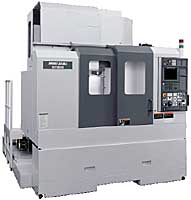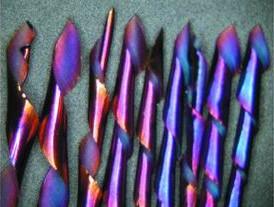The spindle of the machine tool is divided into two types: heavy cutting and light cutting. Generally, the spindle rotation speed of the high-speed machining center is 12,000 to 20,000 rpm, and some parts reach 40,000 to 60,000 rpm. In addition to the design difference, the spindle must be paid attention to. The torque, the wrong application will directly affect the life of the machine. For example, the spindle with low torque should be matched with the tool with smaller diameter. If the tool with large diameter is used for machining, it will cause great damage to the spindle. The machine specification sheet will list the power and torque of the spindle. For example, the power of the spindle is below 16 kW. It is generally recommended to match the tool with a diameter of 20 mm or less. Since the spindle design is purely for high speed and light cutting, if it is used improperly, it will cause damage to the spindle.

figure 1
Tool
Users of many high-speed machining centers often complain that the tool has a short life and high price. To extend the life of the tool, it is necessary to select the right tool for processing. For materials with different hardness, it is necessary to match the appropriate tool and cutting parameters. Many operators and programmers mistakenly believe that the speed and feed rate are slower to extend the life of the tool. In fact, high-speed machining can process steel with a hardness of 60HRC. The key is the heat resistance of the tool. When the cutting edge is cut into the steel processing, if the iron filings reach the tempering temperature, the hardness of the cutting edge will be reduced, but the temperature of the cutting tool will be quite high, which may reach a high temperature of 800 ° C ~ 1100 ° C. The process is called "high temperature cutting effect." The coating on the tool has a high temperature resistance and each tool manufacturer has a different specification. When processing hard steel, pay attention to the color of the iron filings. When the high-temperature cutting effect is reached, the color of the iron filings is yellow. When processing the high-temperature cutting effect, the iron filings should be purple or blue.

figure 2
Figure 2 shows that the iron filings reach different color temperatures at different speeds of the tool. This is a 10mm diameter coated knife. From left to right, the test result is 5,000 to 13,000 rpm, and the color temperature of the iron filings is clearly seen. The higher the color temperature, the greater the softening of the iron filings and the lower the hardness experienced by the cutting edges.
Improve the quality of programmers
The cutting path of high-speed machining is very different from the traditional machining path. If the various aspects are not properly matched, it will lead to slow processing speed, large tool loss and poor finish. The application of one-way toolpath processing, the efficiency of different cutting fluids, and the coordination of the speed and feed rate all directly affect the quality of the workpiece. A high-speed machining center with appropriate staff training can do more with less.
Eye Nuts,Eye Bolts Screwfix,Eyebolts And Eyenuts,Stainless Steel Eye Bolts
Jiangsu Hongze Stainless Steel Wire Rope Co., Ltd , https://www.hzrope.com